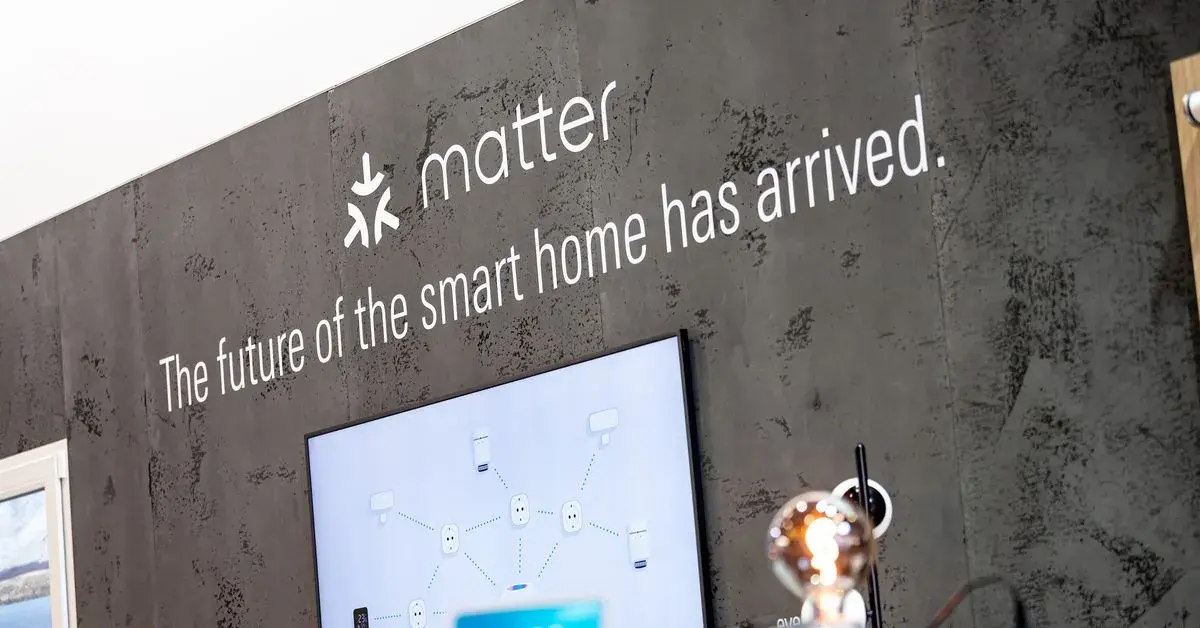The article discusses expectations for smart home announcements at the upcoming IFA tech show in Berlin. While companies may unveil new smart speakers, cameras and robot vacuums, the smart home remains fragmented as the Matter interoperability standard has yet to fully deliver on integrating devices. The author argues the industry needs to provide more utility than novelty by allowing different smart devices to work together seamlessly. Examples mentioned include lights notifying users of doorbell activity or a robot vacuum taking on multiple household chores autonomously. Overall, the smart home needs solutions that are essential rather than just novel if consumers are to see the value beyond the initial cool factor.



So a couple of things. Z-Wave is a proprietary protocol (developed by a single company called Zensys) and is a closed ecosystem, so personally, I’m not a fan of it. And it’s not great choice for interoperability either.
Zigbee on the other hand, is an open standard (IEEE 802.15.4), made by the Zigbee alliance, comprising of major tech companies. The Zigbee alliance later became the Connectivity Standards Alliance (CSA), who are the ones behind Matter. Which is why it appears as if Matter is trying to resolve Zigbee issues.
In actuality though, Matter is trying to proposition itself as a generic standard for the modern IoT world, because things have changed significantly since the times when the Zigbee and Z-Wave protocols were conceived (late 90s - early '00s). The main thing that’s changed is that low-power and cheap system-on-a-chip (SOCs) and single board computers (SBCs) have taken over the world by storm, which has enabled manufacturers to push out cheap home automation products quickly. Making home automation products is no longer a traditional embedded systems and specialized electronics play, where you had to invest a lot of RnD into designing complex circuits, pay for a Z-Wave license etc. Nowadays, even a kid could make their own system using a Raspberry Pi and say Python, without needing any knowledge of low-level protocols or languages.
As a result, the home automation world is filled with too many manufacturers and products, all trying to do their own thing and in-effect, building several closed ecosystems, even though they’re all basically using the same protocols behind the scenes. Plus you also have the existing Zigbee and Z-Wave products.
So before Matter came into the picture, several manufacturers started making their own centralized hubs, as a means for interoperability, like Samsung’s SmartThings, or Apple’s HomeKit etc. Some even have their own closed hubs meant for their own ecosystem of devices, like the Philips Hue bridge. As a result, some homes may even have multiple hubs, with overlapping functionality.
Matter aims to unify all of that. So instead of Philips doing their own thing, instead of Samsung coaxing manufactures to make their systems compatible with SmartThings, instead of manufacturers kissing Apple’s ass to support their products, instead of x company making some half-baked bridging app for y company because the specs haven’t been fully documented or they simply don’t care… we have Matter. Matter aims to solve that mess, at least, on paper. It would still require manufacturers to actually buy into the idea and support the protocol, but at least it’s better than working individually with Samsung and Apple and Amazon etc, or reinventing the wheel and doing their own thing.
As far as I know z-wave has been open for years. Is there something not so about that?
I guess I stand corrected-ish. I’ve always ignored Z-Wave because it was a closed ecosystem. But upon reading more into it, seems like it’s only partially open. They only opened certain parts of the spec for interoperability in late 2016, the standard was ratified by the ITU in Dec 2019, and they formed the non-profit Z-Wave Alliance only in 2020. They apparently made the source code available end of last year, but it’s only available to the Z-Wave Alliance members.
https://z-wavealliance.org/z-wave-alliance-completes-z-wave-source-code-project-for-alliance-members/
So, still not ideal IMO, but better than what it was a decade ago I guess.
Thanks. What do you know about the security differences? Some say pairing security of Zigbee not that great. Thanks.
Other interesting thing is Debian seems to have z-wave libraries but not zigbee ones. At least my version of Debian which is old stable. Home Assistant seems to support both.
There’s actually not much of a security difference between the two these days, both protocols have gone thru improvements, both use AES-128 encryption, both use frame protection etc.
That pairing issue of ZigBee was addressed with v3.0, which uses random install codes for each device.
Other question. If you were starting now what would you do? I need to start replacing old X10 stuff. Zigbee? Z-Wave? Both? Wait for Matter to sort out?
I am kind of attracted to using Home Assistant either on my media center or on a pi.
Thanks.
I have Home Assistant on an old Intel NUC, with mostly Z-Wave switches and two IP based switches, one Kasa IP switch and one Shelly switch. The Kasa and Shelly show the divide in IoT. The Kasa is everything wrong with IoT, requiring an Internet connection to function and is slow to respond. Shelly is everything right as can be. It will work just fine locally without an Internet connection if you set it up that way, but can work cloud based if you don’t have a system to control it.
I’m still on the lookout for Matter switches actually for sale, instead of projects announced and nothing else. So I still buy Z-Wave switches.